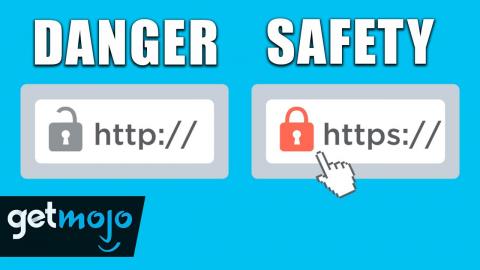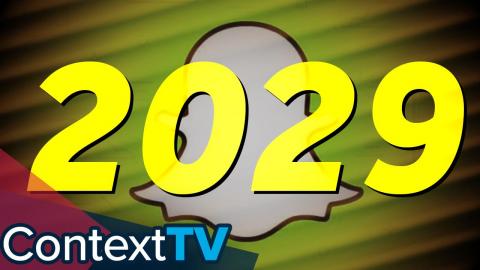VOICE OVER: Rebecca Brayton
WRITTEN BY: Matt Klem
Who remembers these obsolete platforms? For this list, we'll be looking at older online chat applications that have seen a decline in use over the years. Our countdown includes Yahoo! Messenger, iChat, MSN Messenger, and more!
Top 10 Forgotten Online Chat Platforms

advertisement
Top 10 Forgotten Online Chat Platforms
Welcome to WatchMojo, and today we’re counting down our picks for the Top 10 Forgotten Online Chat Platforms.
For this list, we’ll be looking at older online chat applications that have seen a decline in use over the years. We’ll be including both platforms that are now long gone, as well as ones that are still operating but with a small user base.
Do you have fond memories of any of these? Let us know in the comments.
#10: Bulletin Board Systems (BBS)
A long time ago, in a basement far, far away, there were individual computers attached to phone lines that people could connect to via a modem. Known as Bulletin Board Systems, these platforms allowed people to post messages, play text based games, and if you were lucky, engage in an online “chat” over your keyboard. Since the only way to access these systems was through a phone line, BBS’s rarely allowed for more than one person to connect at a time which meant you usually chatted with the board owner. They paved the way for the likes of AOL, Prodigy and other online services before the world wide web became the norm.#9: Yahoo! Messenger
Given the world we live in today, it’s all too easy to forget what the internet was like in a pre-Google era. At one time, Yahoo! was one of the most popular ways to find anything on the web. During the company’s heyday, they launched Yahoo! Pager in 1998—which eventually became Yahoo! Messenger in 1999. It launched at a time when instant messaging was becoming increasingly popular among early internet users. Yahoo!’s offering may have been similar to others, but it did have early attempts at voice chat, text messaging, and even the ability to use your webcam.#8: Internet Relay Chat (IRC)
Internet Relay Chat was a system that allowed users around the world to join chat “channels” using an alias. All channels were prefixed by a “pound” symbol, and always had “operators” which moderated that channel’s conversation. IRC programs such as mIRC could be used to connect to any IRC network and allow you to chat with others. Channels also had controls to block certain users, limit how many could join a channel at a time, and even keep channels hidden from the main list. Despite changes in technology, IRC is still around and continues to be used by many, laying the groundwork for newer platforms with the likes of Discord.
advertisement
#7: iChat
Before it brought the iPhone to the masses, Apple had already established itself with the iMac and iPod. Given how instant messaging was all the rage, Apple released their own online communication app called iChat in 2002. What started as a basic texting app eventually became a full-blown video communication tool. Over time, iChat began to support conversations with other IM networks like AOL and Google. As much as the app’s capability increased and improved over time, it was eventually shown the door when the iPhone “Messages” app replaced it in 2012. Looking at old screenshots, however, you can still see a striking resemblance.#6: Gaim / Pidgin (game pigeon)
This video is a reminder of just how many different instant messaging platforms exist—past and present. Should you choose to have an account on more than one of them, the need to have a separate app for each can become quite tiresome. Gaim was created and released in 1998 to solve this very issue. Now known as Pidgin, Gaim allows users to connect to multiple IM platforms using a single application. Open one app, and you’d be able to see your ICQ, G-Talk, AIM, MSN Live, and others, all within a single, unified interface. Pidgin is still in use today and even allows connections to platforms like Discord, Whatsapp, and Facebook Messenger.#5: Google Talk
Launched in 2005, Google Talk, sometimes known as Gtalk, was Google’s first foray into the instant messaging space. They provided a standalone app you could download, but also allowed apps like Pidgin to connect to their service. Given how popular Gmail had become, it was a welcome integration when Gtalk was added to the Gmail application so users could chat directly to their email contacts. Google also enabled users to send and receive phone calls using the platform, but only if you had a full subscription to their Google Voice service. Google Talk was eventually discontinued in favor of Google Hangouts—although users can still use third party programs to connect to the old chat network.#4: MySpaceIM
With everything the world has seen from the likes of Facebook, it’s hard to fathom that at one time, MySpace was the social network to beat. At its peak, MySpace reached 115 million unique users. Since instant messaging had become such a vital part of internet culture at the time, it was only natural for the then- giant social media platform to create their own. All the typical IM features you’d expect were included, but communication was limited to the MySpace world. Today, MySpace users can still IM each other, if they happen to be on the old social networking site.
advertisement











